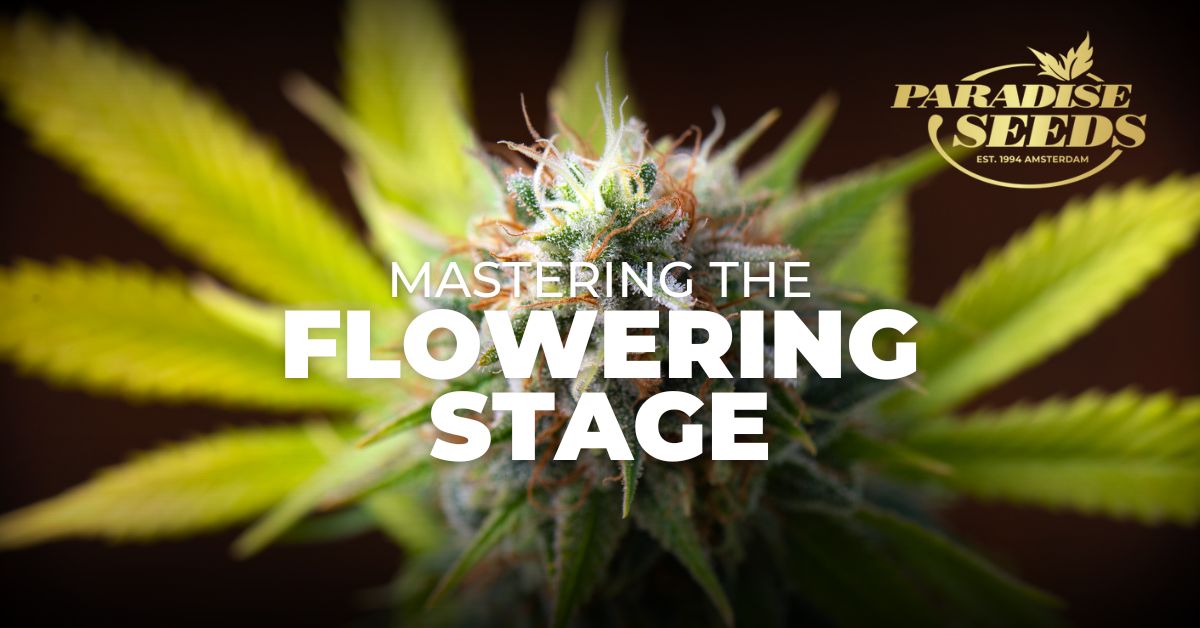This article explores the flowering stage (also known as the budding stage) and provides guidelines and tips to help growers boost flower production for a healthy harvest.
While we focus on Feminized Photoperiod strains, the flowering stage for autoflowers is very similar. The key difference is that autoflowers will start flowering based on age rather than light change (not requiring 12/12 hours of light/darkness). Autoflower varieties typically complete their life cycle from germination to harvest in 8–9 weeks, depending on the strain.
Contents
What happens during the flowering stage?
For most photoperiod cannabis plants, the flowering phase will take between 8-10 weeks, though sativa varieties may take three weeks longer than indica varieties. During this stage, the plant gradually shifts its energy from vertical growth to flower development at the intersections/nodes of its branches.
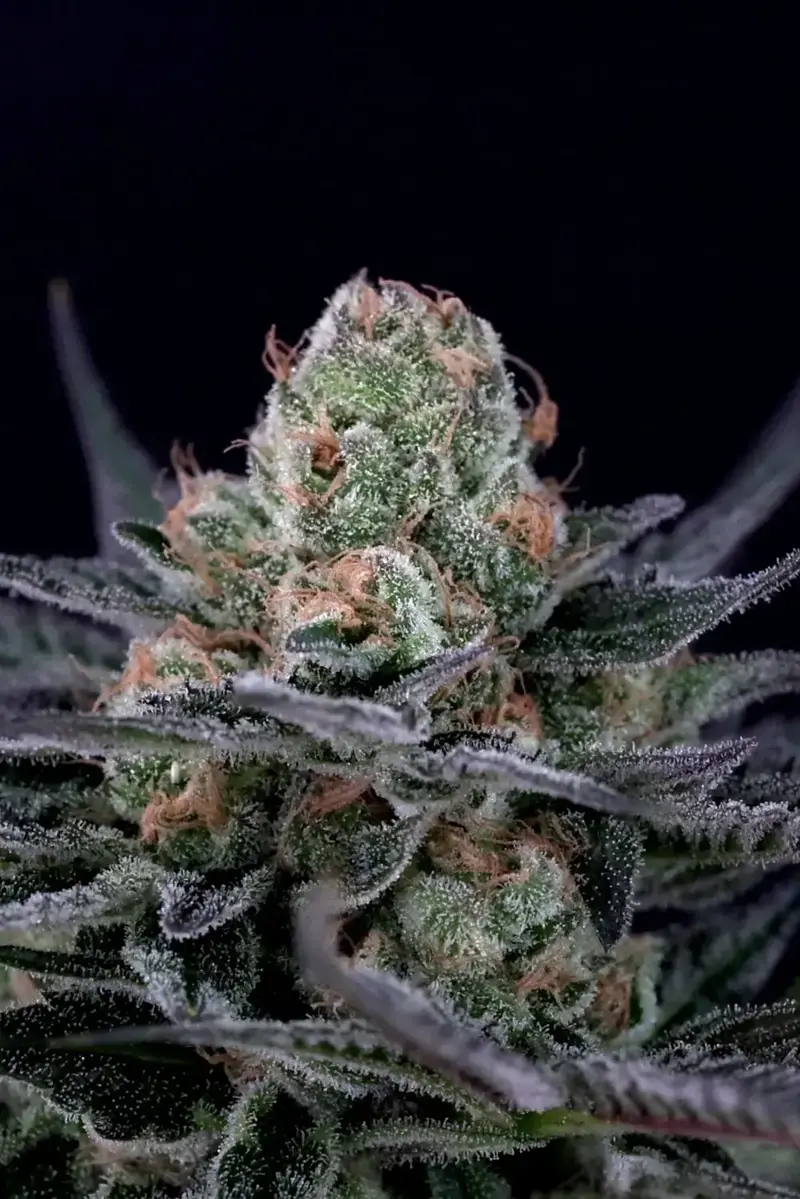
The flowering stage is triggered by a change in light hours. Outdoors, this occurs naturally as days shorten in autumn. Indoors, growers can induce flowering by switching to a 12/12 light/dark schedule.
Once flowering starts, several key processes occur:
- Flower formation: Flower formation: Small buds appear at the nodes and grow larger, developing mass and resin content.
- Calyx Development: Calyxes, the protective outer parts of the buds, swell and form the basis of the flower structure.
- Pistil Growth: Pistils, which look like tiny hairs, emerge from the calyxes. They start white and change color as the bud matures, signaling harvest readiness.
- Trichome Production: Trichomes, the tiny resinous glands on the plant, develops terpenes and cannabinoids. Their color shift from clear to milky or amber is another harvest indicator.
- Trichomes produce terpenes and cannabinoids. Within the resinous glands of the flowers, Terpenes are produced, creating the distinctive of the cannabis plant. Additionally, Cannabinoids, the psychoactive part of the plant are also created within these resinous glands.
- Leaf Discoloration: As the plant focuses on flower development, lower leaves may turn yellow and wither away.
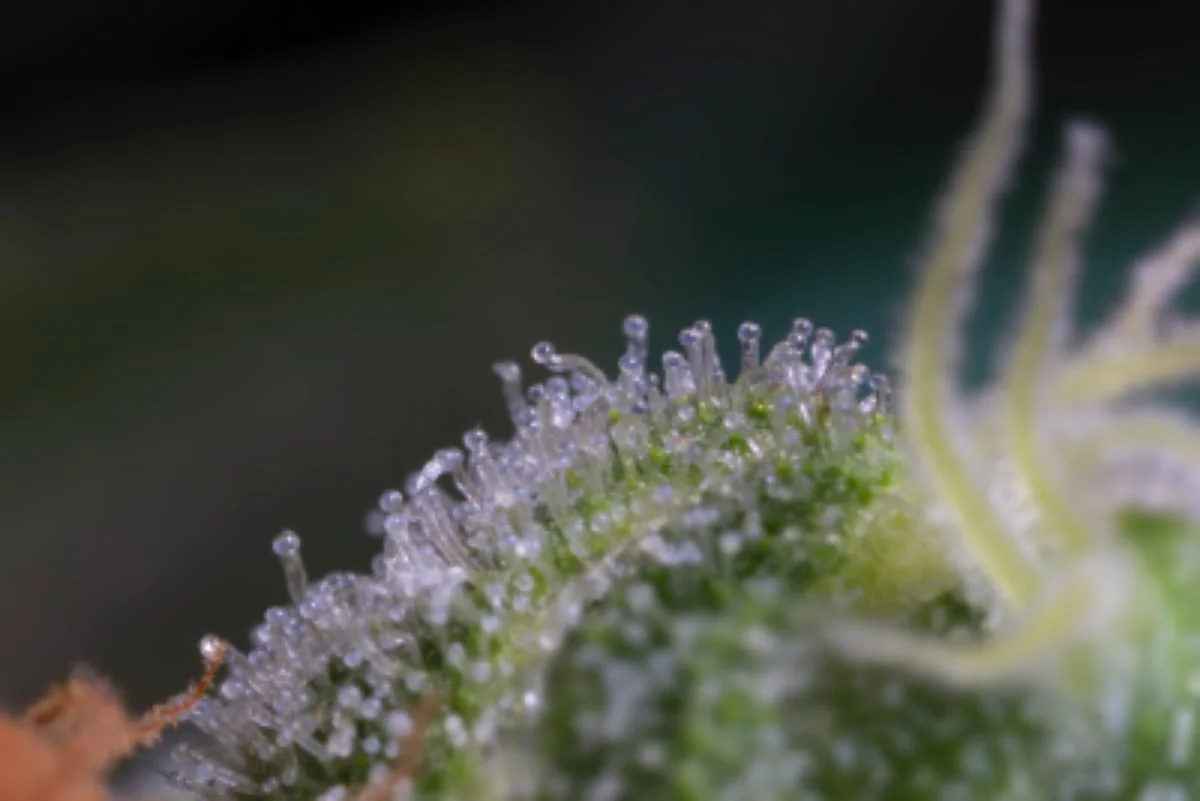
Plant development by week
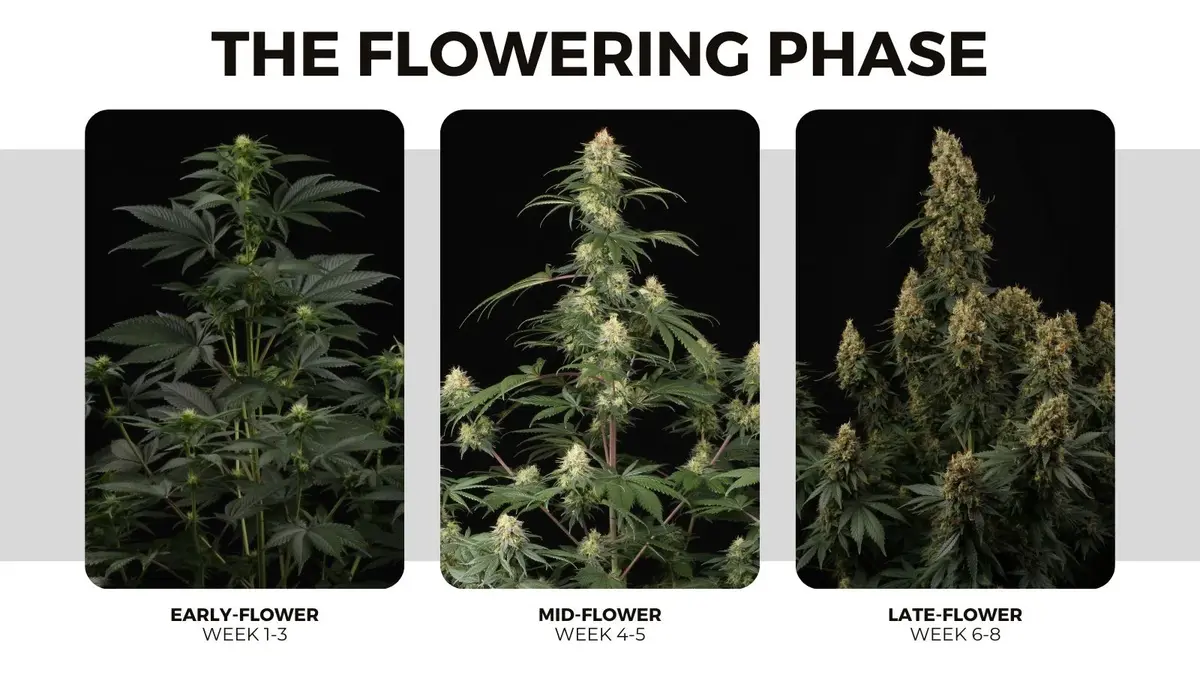
Weeks 1–3: Transition
During this phase the plant transitions from vegetative growth to generative growth, indicated by producing flowers. You’ll notice pistils starting to sprout at bud sites.
When the light changes, the plant typically stretches towards, often doubling or tripling in height.
Tip: Make sure the stretch is factored into an indoor grow room setup to prevent issues with space and proximity to lights. Pruning or training techniques can help manage this rapid vertical growth.
Weeks 4–7: Bud Development
Between week 3 and week 4, small buds which appear like little sea anemones will develop. They will continue to firm up and grow larger in mass over time.
The first trichomes can be spotted. Buds may start giving off an aroma as the terpenoids are starting to form in the trichome glands. It is at this point that nutrient feeds primarily focused on P (Phosphorus) and K (Potassium) will be necessary for flower mass increase.
Tip: Be patient and stick to the prescribed feeding schedule. Overfeeding can cause nutrient burn, which can harm your plants.
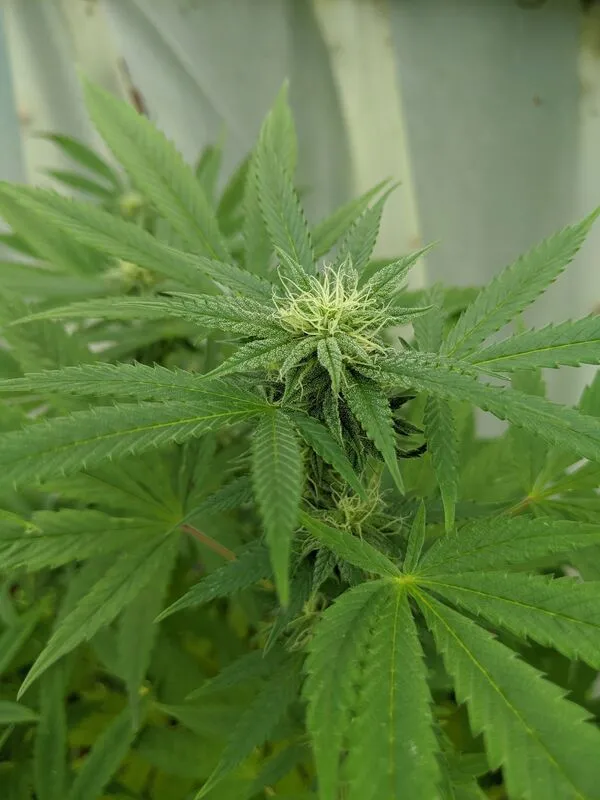
Weeks 7–10: Ripening
From about week 6 or 7, buds will start bulking up significantly. Pistils will start to change color on around week 7-8, turning from white to shades of orange and red. Leaves will discolor and drop off as the plant squeezes its lifeforce into maturing existing flowers.
Trichome production will intensify, initially appearing clear and translucent, but becoming more milky as they mature. Milky trichomes along with more than 50% of colored pistils are indications that the plant is ready for harvest.
During the flowering stage, plants are more sensitive to nutrients and environmental factors, such as heat and light stress. Stressed plants may produce ‘foxtails’, which are tapered buds (or spires).
Tip: At around week 8 or 9, it is good practice to flush cannabis plants of nutrients using just water as a feed.
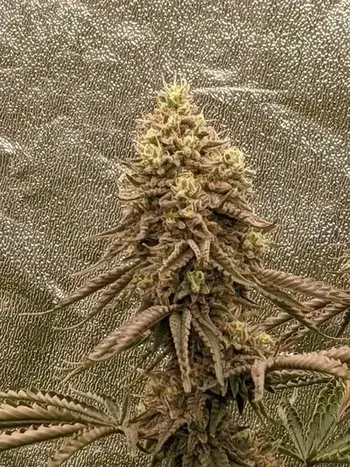
Climate During the Flowering Phase
Lighting
Once you switch to 12/12, the plant will naturally start to flower. However, tweaks to the light spectrum can encourage bud development.
To really get into the detail of lighting check out the importance of harnessing the power of PAR, photons and UV, to understand what plays a vital role when when setting up your light plan.
A method to increase yield is to use LED lights with a variable light spectrum. A deep red helps with the production of photons, while boosting blue and UVB towards the last weeks of flowering should boost trichome production.
Caution: Light leaks from outside the grow room can disrupt lighting schedules and cause stress for plants, potentially turning them into hermaphrodites.
Temperature & Humidity
Maintaining optimal climate conditions is crucial for healthy plants and high yields. Generally, temperatures should range between 22 and 27°C during lights on, with a 2°C drop when lights are off. Lowering the temperature in the final weeks of flowering can boost flower production.
Humidity levels should be adjusted based on the flowering stage. During the first three weeks, keep humidity between 60% and 70% RH. As flowering progresses, reduce humidity to 50-60% RH or lower. Proper air circulation is vital to prevent mold, especially as humidity decreases.
Caution: A high RH and bad air circulation is one of the major contributors to issues like mold and mildew.
Irrigation
Although requiring less compared to in the vegetative stage, the plant is still very thirsty and requires constant feeding of water and nutrients. The nutrient solution should shift to be more PK (phosphorus and potassium) focused rather than Nitrogen focused.
Common Issues During Flowering
Pests
There are a whole host of pests which can descend on a cannabis plant and wreak havoc. Prevention is always easier than a treatment. A good Integrated Pest Management (IPM) system, combining beneficial organisms to promote healthy plants, good hygiene and natural predators to manage emerging pest problem is advised.
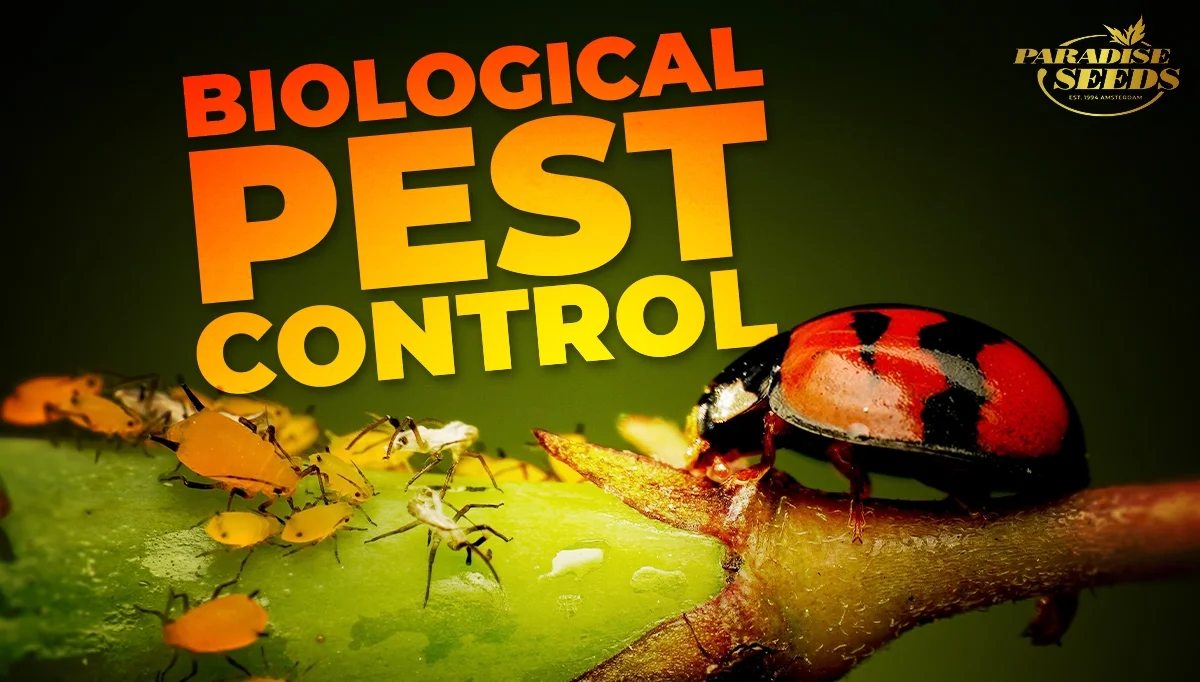
Caution: Do not wait for signs of pest damage, by the time you see damage, the chances are they are well established. Carry out continual and thorough checks on plants throughout the flowering process.
Hermaphroditism
Environmental stress is the major cause for hermaphroditism (plants developing both male and female characteristics). Stress factors include temperature extremes and light disruptions. A feminized plant that turns hermaphrodite can pollinate itself and nearby plants, leading to seed production in its flowers.
Learn how to spot a hermaphrodite early and be aware that some strains are genetically more susceptible to this condition. In particular, Californian varieties fall in this category. So be advised and use the lollipop method (pruning away lower branches) in the pre-flowering or early in the flowering phase to prevent this from happening.
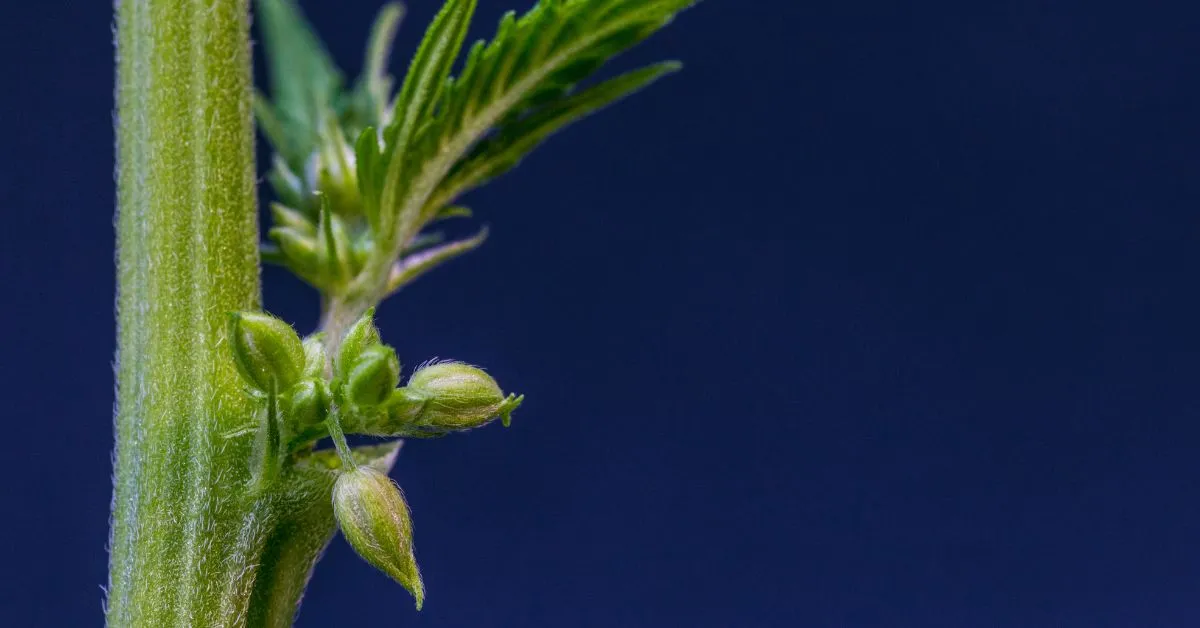
Mold, Mildew and Bud Rot
Mold and bud rot is one of the biggest issues within the flowering stage, certainly for outdoor growers, but it can also be an issue in the grow room.
Indoor growing: Maintain humidity below 60% and ensure good air circulation to prevent these issues. To aid with air movement, it may be necessary to trim the canopy if foliage growth is very dense.
Outdoor growing: The unpredictability of the outdoor growing environment makes mold a real issue. This guide gives excellent mold prevention tips for outdoor growing.
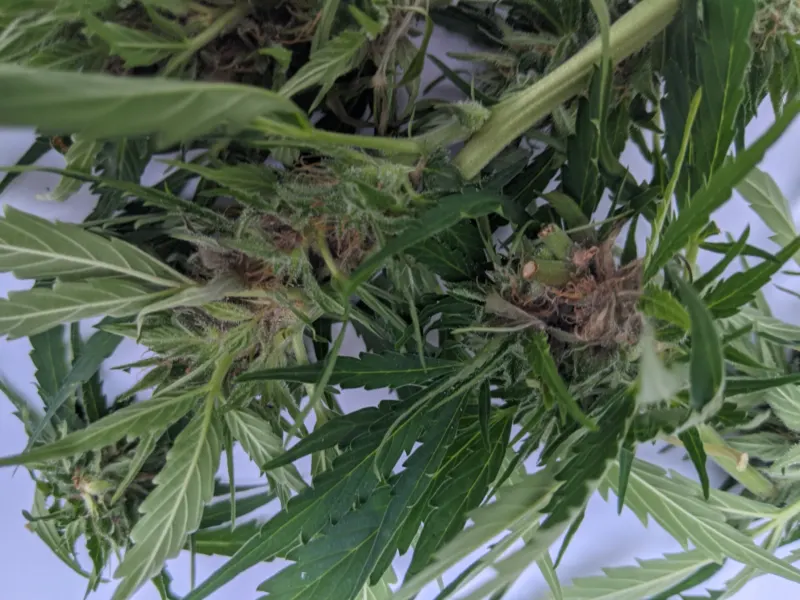
Pruning or training?
While it is beneficial to remove damaged or dying leaves, pruning other parts of the plant is best during the earlier stages of flowering or vegetative growth. At this stage leaves still play a vital role in the flower development, through photosynthesis, so defoliate with care.
The danger with pruning a cannabis plant is that once you start, it can get out of control. Here’s a good video tutorial from the Paradise Skunkworks Project:

Harvesting
Having completed the flowering phase, it is time to harvest. While this is the most rewarding part of the cultivation cycle, keep in mind that it comes with its own specific considerations and potential issues.
To dive deeper into the harvesting process, including curing, refer to a comprehensive guide on harvesting and curing cannabis: All You Need to Know About Harvesting and Curing Cannabis.
Conclusion
The flowering stage of cannabis cultivation requires careful management to ensure a successful and bountiful harvest. Growers must be mindful of environmental conditions, nutrient management, and potential issues like pests and mold.
Although the flowering stage demands attention and patience, the rewards are well worth the effort. The result is a visually stunning and aromatic harvest that is the product of your hard work and dedication.


